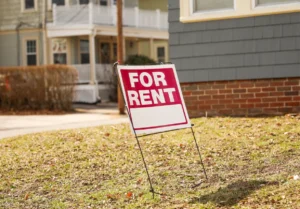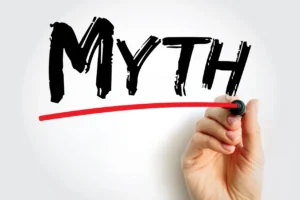How To Know if a Lease is Legally Binding
 As a landlord or property manager, it’s a great feeling once the tenant agrees to the lease agreement and signs their name on the written document. However, there are some steps before they can get to that stage of the process.
As a landlord or property manager, it’s a great feeling once the tenant agrees to the lease agreement and signs their name on the written document. However, there are some steps before they can get to that stage of the process.
Similarly, there are other factors —and responsibilities — to consider when creating and sharing a rental lease agreement to ensure it is legally binding with the prospective tenant.
Keep reading as we break down the process and what to factor in when creating a legally binding lease:
The lease signing process
A proper rental lease agreement is a formal contract between a landlord (or property owner) and a tenant. It details the terms and conditions for the tenant to live in the rental property, including rent payments, duration of stay, security deposit and more.
Below are the steps required for the lease signing process:
1. Forming the lease agreement
Before a tenant or landlord can sign anything, there must be a written lease agreement. This official document should contain every term the property owner wishes the tenant to comply with, including (but not limited to):
- Rental location
- Dates of tenancy
- Rent amount
- Payment methods accepted
- Deposit requirements
- Utilities provided
AAOA offers members a Residential Rental Lease Agreement template, which can streamline and standardize your business.
2. Ensure the lease agreement terms are compliant with local, state and federal law
For all legal concerns and questions, always reach out to an attorney or law professional to determine the correct course of action in your local area or state.
Check out AAOA’s landlord-tenant laws for more information.
3. Have the tenant sign the lease agreement
A written notice can be shared and signed either in person or online.
If the lease agreement is being signed in person, the property owner or their representative (ex. property management company) can walk them through the terms and answer any questions they may have.
If the lease agreement is sent online, it’s up to the tenant to read the terms and send any questions along before they electronically sign the lease. Through online correspondence, confirm with the tenant how they can send the signed lease agreement back to the landlord.
Why should the tenant sign first?
Always have the tenant sign the lease agreement first. This protects you if the tenant receives the lease and then stops communicating with you or never sends the contract back. If this happens, you should notify the tenants in writing that you are withdrawing your rental offer.
Similarly, this protects the landlord if the tenant decides to cross out or change terms in the original lease agreement. This can start negotiations without your signature already on the line in agreement to new terms.
4. Sign the lease agreement
After the tenant has signed, it’s time for the landlord or property manager to provide their signature. Once this is complete, the contract is legally binding to both parties.
This step has to be completed before the tenant moves into the rental unit or house.
5. Share copies of the lease agreement
After the lease agreement has been signed, all parties should receive a copy they can keep and reference, as needed.
As a landlord it’s critical to keep track of all legal documents and store them in a safe, easily accessible location. Best practice is to store all official forms and documents in a standardized, organized system. This may include creating digital copies for 24/7 access.
Verbal lease agreement
Verbal lease agreements, or oral contracts, can be legally binding. However, it’s important to check with a legal professional to ensure whether the verbal agreement meets the necessary requirements.
It’s not recommended to pursue a verbal lease agreement because it can’t be documented, copied and/or referenced in the way a written notice can. This may cause legal issues, especially if the involved parties have different memories of the lease agreement’s details.
How do you know if a lease is legally binding?
Lease rules vary by state, but there are some terms that must be met. The signed lease should include:
- Names of all involved parties
- Dates of tenancy
- Rental amount
- Security deposit and fees
- Rental terms
- Signatures from all involved parties
Beyond these measures, contact an attorney or law professional if you have any concerns about whether the lease agreement is legally binding.
What an enforceable lease means for landlords and tenants
Having a legally binding written lease agreement is extremely beneficial for both landlords and tenants. By detailing each and every term of the tenant, the lease agreement protects both parties in the case of a breach of contract.
If the tenant breaks the rules agreed upon in the rental agreement, the landlord can use the contract to hold the tenant accountable. This may mean using the security deposit to fix or repair damage caused by the tenant to the property or it might mean grounds to start pursuing an eviction (ex., sending the tenant a late rent notice if they miss any payments).
If the situation escalates to a lawsuit, the landlord can pursue legal action based on the signed contract. The same is true for the tenant, if the landlord breaks any terms.
Simplify the rental process with AAOA today
The American Apartment Owners Association was created to help landlords manage their business better. Your best line of defense is the tenant screening process, which is why we provide industry-leading tenant screening and tenant credit check resources.
Beyond helping you find the ideal tenant for your rental property, we also provide 24/7 access to landlord forms, services, templates and more.
Excited to learn more about membership benefits and how you can streamline your real estate business for success?
The information provided herein is for advisory purposes only and AAOA takes no responsibility for its accuracy. AAOA recommends you consult with an attorney familiar with current federal, state and local laws.













 Accessibility
Accessibility